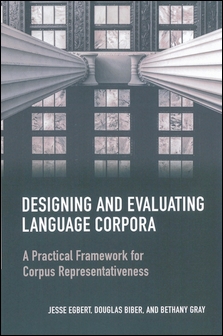書籍分類

Designing and Evaluating Language Corpora: A Practical Framework for Corpus Representativeness
作者:Jesse Egbert, Douglas Biber, Bethany Gray
原價:NT$ 1,100
ISBN:9781316605882
版次:1
年份:2022
出版商:Cambridge University
頁數/規格:300頁/平裝單色
版次:1
年份:2022
出版商:Cambridge University
頁數/規格:300頁/平裝單色
內容介紹 作者介紹
- Description
- Surveys the state of corpus design and representativeness.
- Provides a practical framework for conceptualizing and achieving corpus representativeness, and helps readers to understand and apply this framework to the design of new corpora and the evaluation of existing corpora.
- Gives readers examples and activities to help them develop practical skills in corpus design and evaluation.
Corpora are ubiquitous in linguistic research, yet to date, there has been no consensus on how to conceptualize corpus representativeness and collect corpus samples. This pioneering book bridges this gap by introducing a conceptual and methodological framework for corpus design and representativeness. Written by experts in the field, it shows how corpora can be designed and built in a way that is both optimally suited to specific research agendas, and adequately representative of the types of language use in question. It considers questions such as 'what types of texts should be included in the corpus?', and 'how many texts are required?' – highlighting that the degree of representativeness rests on the dual pillars of domain considerations and distribution considerations. The authors introduce, explain, and illustrate all aspects of this corpus representativeness framework in a step-by-step fashion, using examples and activities to help readers develop practical skills in corpus design and evaluation.
分類位置:
ELT > ELT > Teaching Resources


